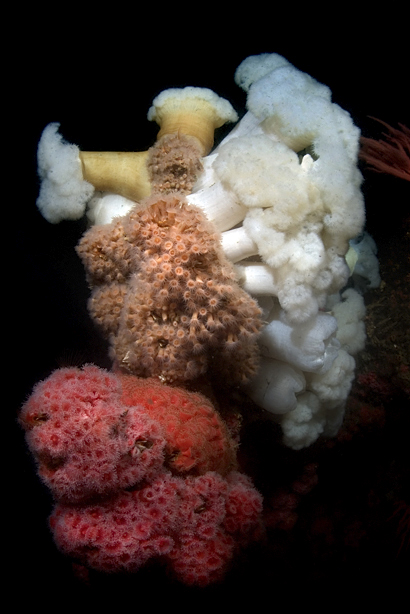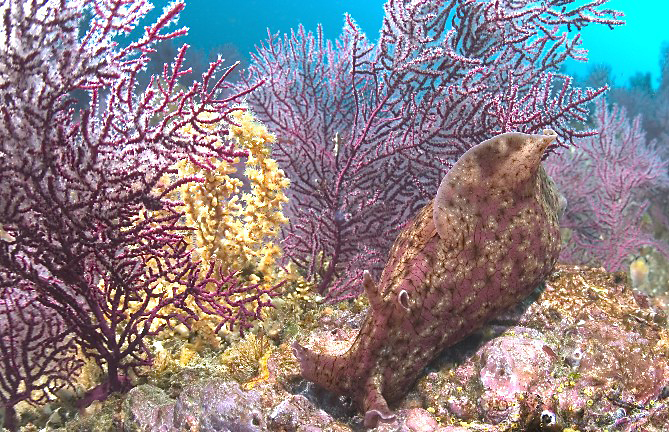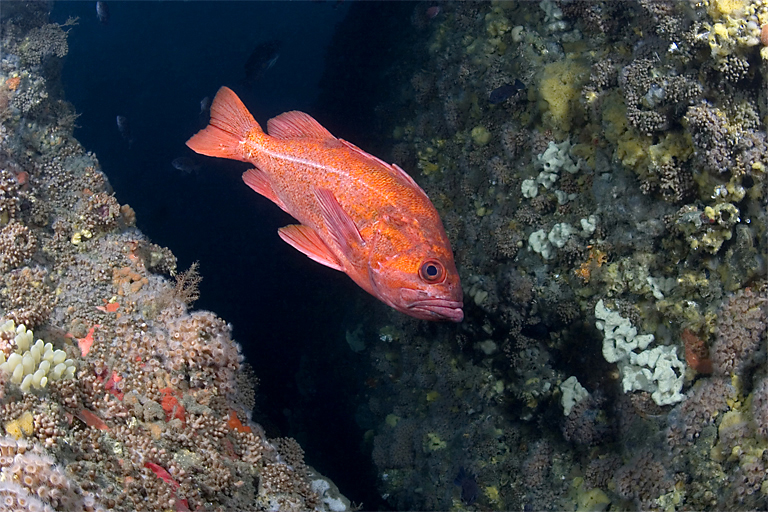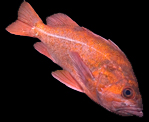
Zoanthid anemone

A column of anemones. From top to bottom: giant plumed anemones (Metridium
farcimen), yellow zoanthids (Epizoanthus scotinus), and club-tipped
anemones (Corynactus californica). This is an example of how strobe
lighting can be used to manipulate how the human eye and brain perceive a scene.
In this case the strobes were set to make the Metridiums appear higher
off the bottom than the Corynactus. This isn't actually the case. The
subject's true orientation actually makes it look rather unphotogenic. I was a
little slow to realize how pretty this column is, and, oddly enough, this shot
was taken more out of frustration than anything else. The sole purpose for this
dive was to take pictures of a subject about three feet away. These pictures
didn't turn out nearly as well as I had hoped and I switched to taking shots of
this anemone column to console myself.
"Deep Shale", Monterey Bay, California
April 16, 2005

California sea hare (Aplysia californica) and purple gorgonians
(Eugorgia rubens) with zoanthid anemones (Parazoanthus
lucificum?). Even when aided by a picture, sea hares can be difficult to
describe to someone who has never seen one. In fact, they're even quite puzzling
when you have one in your hand.
"Coral Reef", Anacapa Island, California
January 1, 2005

In areas frequented by spearfishmen, vermilion rockfish (Sebastes
miniatus) are exceptionally wary of divers. However, this animal, living in
a remote area and at depth just shallower than the limits of recreational
diving, enthusiastically greets human visitors.Red light is lost quickly at
depth. The coloring of this animal, while striking near the surface, is
effective camouflage in deeper waters.
"Kawika's Kone", Big Sur, California
December 15, 2004






